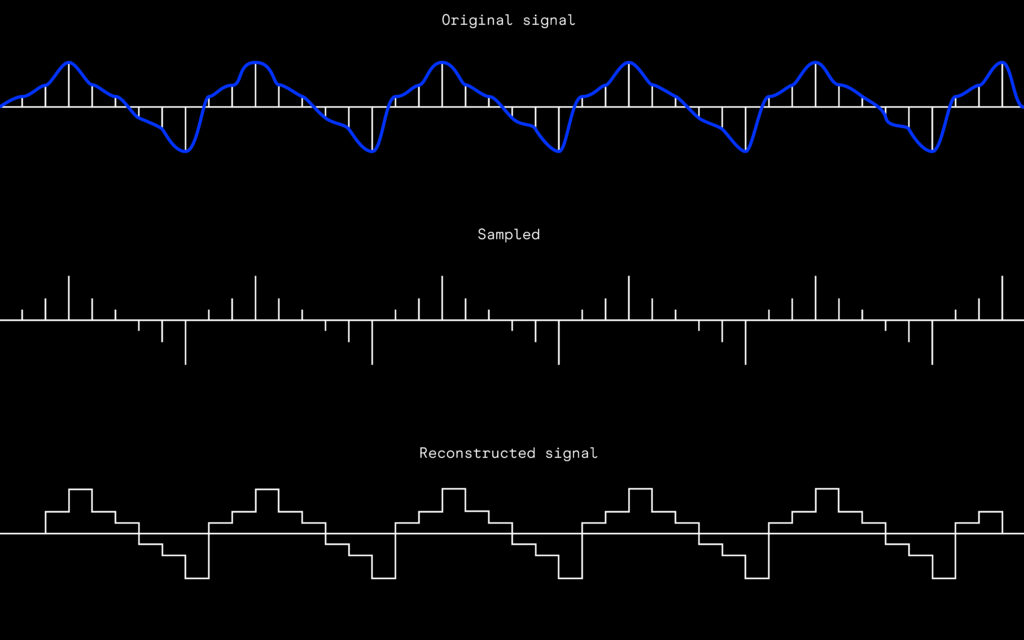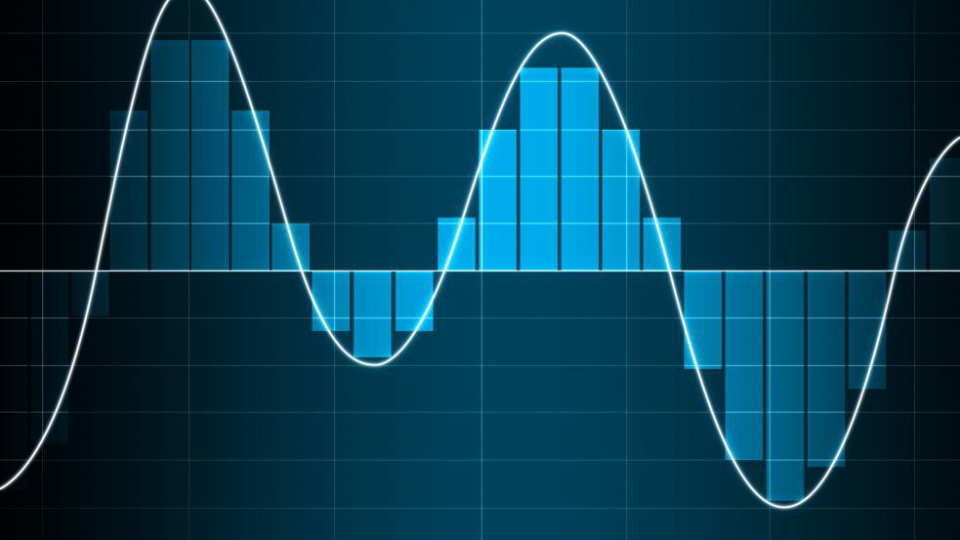Analog to Digital Conversion – What is it and why it matters
In the world of music production, there’s a transformation happening behind the scenes that turns the real sounds of instruments and vocals into the digital language of computers. It’s called “analog-to-digital conversion,” and it’s a crucial part of how we make and enjoy music today. In this article, we’ll break down what this conversion is all about, why it’s important, and how it affects the tools we use, like audio converters and samplers.
What Is analog to digital conversion
Analogue-to-digital conversion (ADC) is the process of converting real-world analogue audio signals, which are continuous and varying in amplitude, into digital data that a computer or digital audio workstation (DAW) can understand and process.
Computors speak in a different language – the language of zeros and ones, or binary code. Analog-to-digital conversion (ADC) acts like a musical translator. It takes those continuous analogue signals and turns them into a series of digital numbers that your computer can understand.

Why Does It Matter?
Analog-to-digital conversion matters a lot in music production. This is because it allows us to harness the power of computers to record, manipulate, and share audio in ways that weren’t possible before. Here’s why it’s so important:
1. Precision and Clarity
When analogue sounds become digital, they’re broken down into tiny chunks called samples. These samples are like snapshots of the sound at specific moments in time. The more samples we take per second, the more precise the digital representation becomes. This precision ensures that every subtle nuance of a performance is captured, giving us crystal-clear recordings.
2. Endless Possibilities
Once your music is in the digital realm, you’re creative options are limitless. You can edit, layer, and manipulate your sounds in ways that would make your analogue gear jealous. Digital audio workstations (DAWs) become your playground. You will even find that many of your virtual instruments feature multi-samples that would have undergone Analog to Digital conversion. Such is the importance of this process in modern music production.
3. Reproducibility
Once music has been digitised it becomes incredibly reproducible. You can record something in your bedroom, and someone on the other side of the world can listen to it instantly. This ease of sharing has revolutionized how we discover and enjoy music.
4. Consistency
Unlike analogue gear which can change over time, digital systems are consistent. A vocal recorded today will sound exactly the same in 10 years time with no variations due to ageing equipment or media.
The principles of analog-to-digital conversion.
So, how does this analog-to-digital conversion happen in practice? That’s where audio converters come into play. Audio converters act like gatekeepers between the analog and digital worlds taking the analogue audio signal and transforming it into a digital format.
Here’s a simplified look at how audio converters work:
- Sampling: The converter takes quick snapshots of the incoming analogue signal at regular intervals. The number of snapshots taken per second is called the sample rate. Common sample rates include 44.1 kHz (44,100 snapshots per second) and 48 kHz.
- Quantization: Each snapshot’s amplitude (how loud or soft the sound is) is measured and assigned a digital value. This process is called quantization. The more bits you use for quantization (common values are 16-bit or 24-bit), the finer the detail of your digital representation.
- Encoding: Finally, all these snapshots and their assigned values are turned into binary code – strings of zeros and ones that the computer can understand.
The Role of Audio Converters in music production.
Audio converters come in various shapes and sizes. For example, they will be built into your smartphone or mobile device for voice recording. If you ask your smart speaker to play something it will have to first convert your voice into digital.
In music production, analog-to-digital conversion is most widely associated with audio interfaces and Hardware samplers. Let’s take a look at these two stalwarts of the studio.
Audio Interfaces

Audio interfaces are used to connect audio sources such as instruments and microphones to computers. If you plan on recording audio into a DAW then you will need some form of audio interface to handle the analog-to-digital conversion. They vary massively in price from basic entry-level examples starting at around £20 to high-end professional units that will set you back many thousands.
Audio interfaces often offer multiple inputs and outputs for versatile recording setups and enable musicians to monitor their performances in real-time. They are a fundamental tool for achieving professional-quality audio recordings in a music setup. I’ve listed a number of popular audio interfaces below.
- M-Audio M Track Solo: This is an affordable and entry-level audio interface suitable for beginners. It typically offers one microphone input and one instrument input.
- PreSonus AudioBox USB 96: The PreSonus AudioBox is another budget-friendly option with a compact design. It typically features two microphone/instrument inputs.
- Universal Audio Apollo Twin MKII: This interface is known for its high-quality preamps and audio conversion. It offers UAD processing capabilities for adding DSP-powered plugins. It falls in the mid-price range.
- Prism Sound Lyra 2: is a well-regarded compact audio interface known for its high-quality audio performance and suitability for professional studio applications.
- Apogee Symphony I/O mk II: This is a high-end interface with top-notch audio quality and extensive I/O options. It’s among the most expensive choices.
Samplers
Digital hardware samplers pre-date audio interfaces and were one of the first types of machines to utilise analog-to-digital conversion. The first sampler was the Fairlight CMI (Computer Musical Instrument). Launched in 1979. The Fairlight featured a maximum sampling rate of 24 kHz and an 8-bit audio resolution, which was state-of-the-art at the time.
The 1980s saw many more hardware samplers come to market. Many of these samplers are now highly sought-after due to their unique sound characteristics. The limited nature of these samplers’ analog-to-digital conversion creates what we now refer to as a bit crunched sound. The sound of classic samplers like Akai’s S950 and the Emulator SP1200 have been modelled for use in modern DAWs. It is slightly ironic that we now spend a premium buying audio interfaces with high-quality analog-to-digital conversion, only to then mimic the sound of vintage machines with limited converters.

Summary
Whether you’re bringing the real world into your digital music with an audio interface or experimenting with all the sonic possibilities a sampler brings, analog-to-digital conversion is at the heart of modern music production. It’s the bridge that allows us to explore, create, and share music like never before. From capturing the nuances of a live performance to crafting entirely new sonic landscapes, it’s a journey that’s made possible by the magic of turning waves into numbers and back again.
Remember – RouteNote Create subscriptions start from as little as $2.99. You also get 10 FREE credits to spend on samples along with access to our FREE sample pack bundle when you sign-up!
